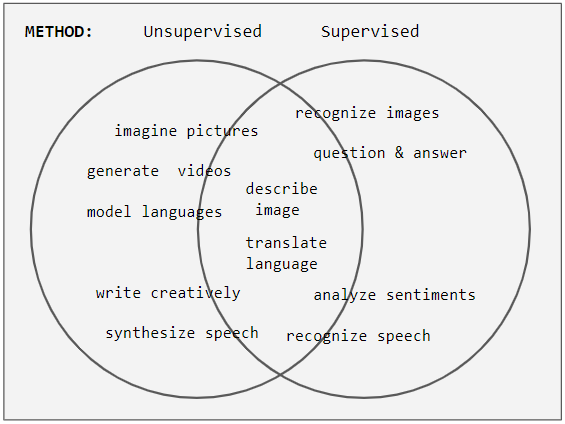
Supervised learning
Supervised learning (SL) is a paradigm in machine learning where input objects (for example, a vector of predictor variables) and a desired output value (also known as human-labeled supervisory signal) train a model. The training data is processed, building a function that maps new data on expected output values.[1] An optimal scenario will allow for the algorithm to correctly determine output values for unseen instances. This requires the learning algorithm to generalize from the training data to unseen situations in a "reasonable" way (see inductive bias). This statistical quality of an algorithm is measured through the so-called generalization error.
$_$_$DEEZ_NUTS#1__answer--0DEEZ_NUTS$_$_$
$_$_$DEEZ_NUTS#1__answer--1DEEZ_NUTS$_$_$
$_$_$DEEZ_NUTS#1__answer--2DEEZ_NUTS$_$_$
$_$_$DEEZ_NUTS#1__answer--3DEEZ_NUTS$_$_$
$_$_$DEEZ_NUTS#1__answer--4DEEZ_NUTS$_$_$
$_$_$DEEZ_NUTS#1__answer--5DEEZ_NUTS$_$_$
$_$_$DEEZ_NUTS#1__answer--6DEEZ_NUTS$_$_$
$_$_$DEEZ_NUTS#1__answer--7DEEZ_NUTS$_$_$
$_$_$DEEZ_NUTS#1__answer--8DEEZ_NUTS$_$_$
$_$_$DEEZ_NUTS#1__answer--9DEEZ_NUTS$_$_$
$_$_$DEEZ_NUTS#0__titleDEEZ_NUTS$_$_$
$_$_$DEEZ_NUTS#0__subtitleDEEZ_NUTS$_$_$
Generative training[edit]
The training methods described above are discriminative training methods, because they seek to find a function that discriminates well between the different output values (see discriminative model). For the special case where is a joint probability distribution and the loss function is the negative log likelihood a risk minimization algorithm is said to perform generative training, because can be regarded as a generative model that explains how the data were generated. Generative training algorithms are often simpler and more computationally efficient than discriminative training algorithms. In some cases, the solution can be computed in closed form as in naive Bayes and linear discriminant analysis.
$_$_$DEEZ_NUTS#2__titleDEEZ_NUTS$_$_$
$_$_$DEEZ_NUTS#2__descriptionDEEZ_NUTS$_$_$
There are several ways in which the standard supervised learning problem can be generalized:
$_$_$DEEZ_NUTS#4__titleDEEZ_NUTS$_$_$
$_$_$DEEZ_NUTS#4__subtextDEEZ_NUTS$_$_$
$_$_$DEEZ_NUTS#4__answer--0DEEZ_NUTS$_$_$
$_$_$DEEZ_NUTS#4__answer--1DEEZ_NUTS$_$_$
$_$_$DEEZ_NUTS#3__titleDEEZ_NUTS$_$_$
$_$_$DEEZ_NUTS#3__subtextDEEZ_NUTS$_$_$
$_$_$DEEZ_NUTS#1__titleDEEZ_NUTS$_$_$
$_$_$DEEZ_NUTS#1__subtextDEEZ_NUTS$_$_$
$_$_$DEEZ_NUTS#5__titleDEEZ_NUTS$_$_$
$_$_$DEEZ_NUTS#5__subtextDEEZ_NUTS$_$_$



